Elon Musk faces skeptics as Tesla gets ready to unveil 'Optimus' robot

A humanoid robot developed by Tesla, known as Tesla Bot or Optimus. Tesla/Handout

Audio By Vocalize
Tesla Chief
Executive Elon Musk blamed overreliance on factory robots for sending the
electric carmaker to "production hell" four years ago, saying humans
were better at certain jobs.
Musk's Texas company now is floating ambitious plans to deploy
thousands of humanoid robots, known as Tesla Bot or Optimus, within its
factories, expanding eventually to millions around the world, according to job
postings. Buzz is building within the company as Tesla is having more internal
meetings on robots, a person familiar with the matter said.
Longer
term, Musk said at a TED Talk robots could be used in homes, making dinner,
mowing the lawn and caring for the elderly people, and even becoming a
"buddy" or a "catgirl" sex partner.
The robot business eventually may be worth more than Tesla's car
revenue, according to Musk, who is now touting a vision for the company that
goes well beyond making self-driving electric vehicles.
At its "AI Day" on Sept. 30, Tesla will unveil a
prototype from its project Optimus, an allusion to the powerful and benevolent
leader of the Autobots in the Transformers series. Production could start next
year, Musk said.
Tesla
faces skepticism that it can show technological advances that would justify the
expense of "general purpose" robots in factories, homes and
elsewhere, according to robotics experts, investors and analysts interviewed by
Reuters.
Tesla already employs hundreds of robots designed for specific
jobs for production of its cars.
Humanoid robots have been in development for decades by Honda
Motor Co and Hyundai Motor Co's Boston Dynamics unit. Like self-driving
cars, the robots have trouble with unpredictable situations.
"Self-driving
cars weren't really proved to be as easy as anyone thought. And it's the same
way with humanoid robots to some extent," the lead of NASA's Dexterous
Robotics Team, Shaun Azimi, told Reuters.
"If something unexpected happens, being flexible and robust
to those kinds of changes is very difficult."
At an "Autonomy" event in 2019, Musk promised 1 million
robotaxis by 2020 but has yet to deliver such a car.
Musk's robots may be able to demonstrate basic capabilities at the
event, but it would be hard for them to impress public expectations of robots
that are as capable as humans, experts say.
To succeed, Tesla will need to show robots doing multiple,
unscripted actions, said Nancy Cooke, a professor in human systems engineering
at Arizona State University. Such proof could provide a boost to Tesla stock,
which is down 25% from its 2021 peak.
"If he just gets the robot to walk around, or he gets the
robots to dance, that's already been done. That's not that impressive,"
she said.
Tesla did not respond to Reuters' request for comments, but Musk
in the past proved skeptics wrong, jump-starting the electric car market and
building a rocket company, SpaceX, although some product launches were behind
schedule.
Initially, Optimus will
perform boring or dangerous jobs, including moving parts around its factories,
according to Musk.
Musk acknowledged that
humanoid robots do not have enough intelligence to navigate the real world
without being explicitly instructed.
But he said Tesla can
leverage its expertise in AI and key components to develop and produce smart,
yet less expensive, humanoid robots at scale.
He tweeted on Monday that
its Autopilot team is also working on its Optimus robot, when asked about fixes
of what it calls Full Self-Driving beta - a test version of its new automated
driving software.
Tesla
is on hiring spree for people to work on humanoid bi-pedal robots, with about
20 job postings on "Tesla Bot" including jobs for designing key robot
parts like "actuators".
"The code you will write will at term run in millions of
humanoid robots across the world, and will therefore be held to high quality
standards," one of the job postings said.
Jonathan Hurst, chief technology officer at Agility Robotics, a
humanoid robot firm founded in 2015 said the technology "is right now
starting to turn the corner."
"Certainly, an important measure of success is do they make
money from it," he told Reuters, referring to Tesla's humanoid robot
efforts.
Analysts see more pageant than product. "It's all part of
distracting people and giving them the next shiny object to chase after,"
Guidehouse Insights analyst Sam Abuelsamid said.
"Investors are not excited about Optimus," said Gene
Munster, managing partner at venture capital firm Loup Ventures, which holds
Tesla stocks. "It's just such a low probability that it works at
scale," he said, saying it is "infinitely harder than self-driving
cars."
And then there is Musk's own experience with robots in the
factory.
During the 2018 production hell, Musk specifically noted the
problems of the "fluff bot," an assembly robot that failed to perform
simple tasks that human hands can do - picking up pieces of "fluff"
and placing them on batteries.
He said the cost of having technicians maintain the complicated
robot far exceeded that of hiring someone to do the assembly.
The fluff bot is "a funny example but drives home the point
that autonomy often doesn't generalize well, and so handling soft fluffy
material that isn't as predictable as a rigid part was causing a huge
problem," Aaron Johnson, a mechanical engineering professor at Carnegie
Mellon University, said.


Leave a Comment